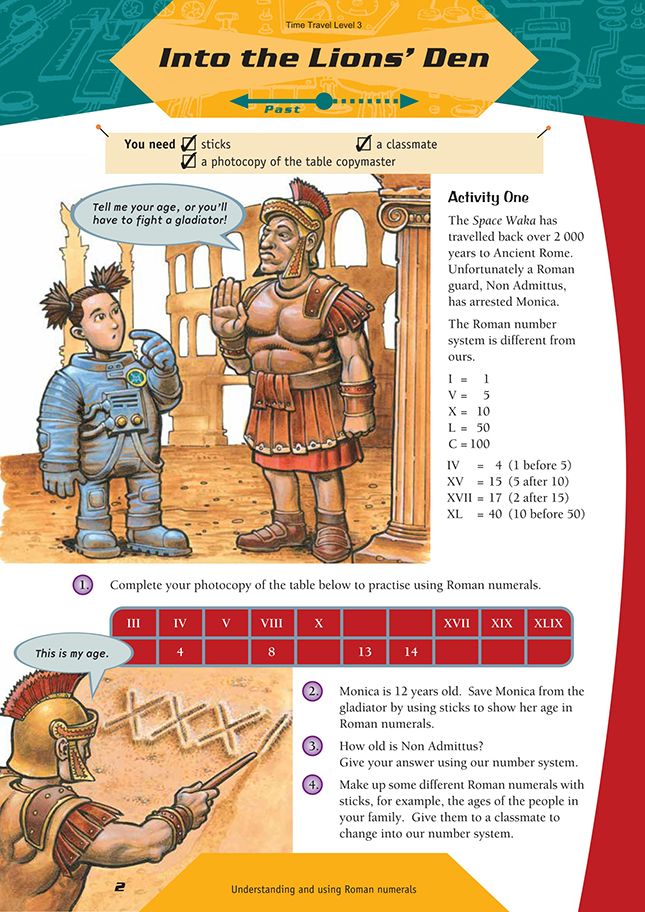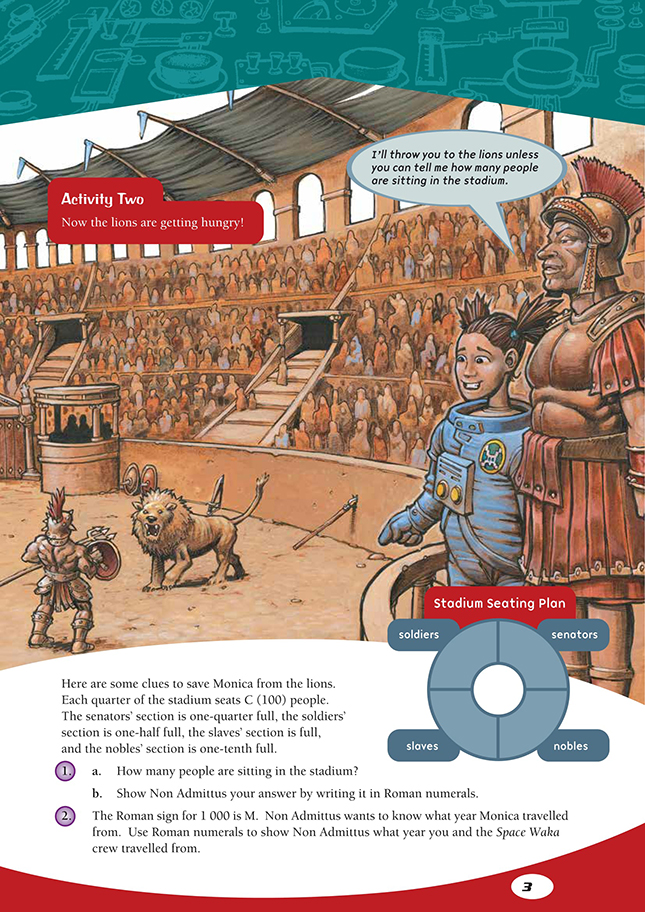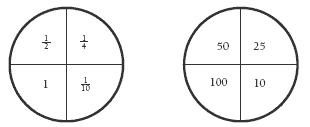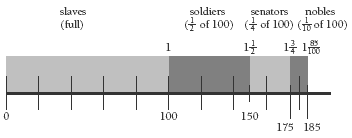This is a level 3 number activity from the Figure It Out theme series.
Click on the image to enlarge it. Click again to close. Download PDF (547 KB)
find a fraction of a number
use Roman numerals
Copymaster of table
Sticks
FIO, Level 3, Theme: Time Travel, Into the Lion's Den, pages 2-3
A classmate
Discuss the Roman numeral system with the students to ensure that they can use it confidently before they start this activity. The Roman numeral system is a base 10 system that is additive, building numbers up through 5, rather than being founded on place value as our number system is. This means that numbers are built up by adding the values of the symbols together, for example, 6 = VI (5 + 1), 18 = XVIII (10 + 5 + 3). Some students may have difficulty with the “one before” idea of some of the numbers, for example, 4 = IV (“one before” five), 9 = IX (“one before” 10). For students who are having difficulty with this, point out that, in the Roman numeral system, a symbol cannot be used more than three times in a row, for example, 90 is XC, not LXXXX.
In the case of two-digit numbers, the students need to remember to build the Roman numeral for the tens digit first and then the ones digit, for example, 49 is XLIX (40 + 9), not IL.
Some students might like to do some more research on Roman numerals. One website that might be a useful start is: http://www.novaroma.org/via_romana/numbers.html
Note: Number, Figure It Out, Levels 2–3, page 4, Activity Two offers further exercises with Roman numerals.
As extension, the students could solve these problems:
a. XI + XII =
b. IV + VI =
c. XVIII + XXVI =
d. ILVIII – XXVII =
e. L – XXVII =
Discuss with the students whether they think the problems are easier to solve using our Arabic numerals or Roman numerals.
You can also extend this activity by asking the students to further investigate the Roman and Arabic numeral systems. For example, the numeral system that we use is known as the Arabic numeral system. The students may be interested to research how we came to use this numeral system.
Roman numerals are still used today. They are used on some clock and watch faces and for giving the date of TV programmes and films. The students could work out when the movies and TV programmes they watch were made. Lower case Roman numerals, such as i, ii, iii, and iv, are used as a numbering system in books such as the Figure It Out series.
You could ask more able students to write the year they were born in Roman numerals. This is more difficult than it seems because there are several different schools of thought about the correct way to write the 1990s in Roman numerals. The website mentioned above contains a converter which shows how to write numbers like '1999' in Roman numerals (http://www.novaroma.org/via_romana/numbers.html).
Activity Two
This activity helps to make explicit the link between fractions and decimals, which the students will encounter when they work at level 4. This is a sets model of fractions, that is, finding a fraction of a set of objects.
For example:
The students could use a variety of strategies to answer question 1a, for example:
• a diagram:
• both additive and multiplicative strategies:
• a double number line:
The top number line shows the fractions to be added. The bottom number line shows the numbers of people that correspond to the fractions.
Answers to Activities
Activity One
1.
2. XII
3. 31
4. Practical activity
Activity Two
1. a. 25 senators + 50 soldiers + 100 slaves + 10 nobles = 185 people
b. CLXXXV
2. Answers will vary depending on the year.
For example, 2002 is MMII.
Teacher to check






